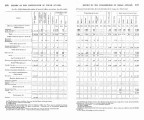| OCR Text |
Show whose general superintendence these Indians are, that the agency be removed from its present location in the vicinity of Fort Sill, or else that the military post be removed to some other and more distant point, the reason assigned beiug that the influences emanating from this post tend strongly to further denloralize the Indians, even those best dis-posed, and to render unavailing the present efforts for their improve-ment. However, it may be said, in a word, of these Indians that their civil-ization must follow their submission to the Government, and that the first necessity in respect to them is a wholesome example, which shall inspire fear and command obedience. So long as four-fifths of these tribes take turns at raiding into Texas openly and boastfully bringing baok scalps and spoils to their reservation, efforts to inspire very high ideas of social and industrial life among the communities of which the raiders form so large a part will presumably result in failure. These Indians, under the two treaties made with them October 21,1867, have limited annuities, &o., (twentsfive installments still due,) as follows: For beneficial objects, $30,000, and for clothing, $26,000. A carpenter, farmer, blacksmith, miller, engineer, physician, and teacher are also furnished them per said treaties, at a cost to the Government of $7,700 per annnm. Those who remain on the reservation are also supplied with subsistence at the expense of the Goverrlment. Arapahoes and Cheyennes of the flouth. -These tribes are native to the section of oountry now inhabited by them. The Arapahoes number at the present time 1,500, and the Cheyennes 2,000. By the treaty of 1867, made with these Indians, a large reservation was pro-vided for them, bounded on the north by Hansas, on the east by the Arkansas River, and on the sonth and west by the Red Fork of the Arkansas. They have, however, persisted in a refusal to locate on this reservation; and another tract, containing 4,011,500 acres, north of and - adjoining the K~owaa nd Comanche reservation, was set apart for them by Executive order of August 10,1869. By act of May 29,1872, the Secretary of the Interior was authorized to negotiate with theseIndians for the relinauishment of their claim to the lands ceded to them hv" the sail1 trtX3ty,;;~~1t01 g ivethem in lieu thereof ;a .Lsutfirientn &l permuucnt locario~~I I"~ O I II ~ I I ~ceYd ed t u the iT~lirrcSl t3rrs by tho Creeks an11 Semiuoles in twoties matlo with tl~enii l l 1366. Xt!eoti:~riousto theeud ~~~~ pmposwl wwe t1111y entered illto with rl~esat r ibes i~l i tcdlb~u,t , i l k r l ~ u course ot's~rcul~eg utiationa, it has bccon~uthev iew of this O&~CtCl~ iitr im tribes should no ionper be issociated in the occunatior~o f a reservation. The Arapahoes areUmanifesting an increasing kisinclination to follow further the fortunes of the Cheyennes, and crave a location of their own. Inasmuch as the conduct of the Arapahoes is uniformlj good2 and their disposition to make industrial improvement very decided, it 1s thought that they should now be separated from the more turbulent Cheyennes, and given a place where they may carry out their better intentions without interruptiou and without the access of influences tending to draw their young men away to folly and mischief. With this view, a contract, made subject to the action of Congress, was entered into be-tween the Commissiouer of 1udia11 Affairs and the delegat,ion of the Ar-apaho tribe which visited Washington during the present season, (the delegation beiug fully empowered thereto by the tribe,) by which tho Arapahoes relinquish all their interest in the reservation granted them by the treaty oE 1867, in consideration of the grant of a reservation be-tween the North Fork of the Cauadiau River and the Red Fork of the Arkansas River, and extending from a point ten miles east of the ninety- |



































































































